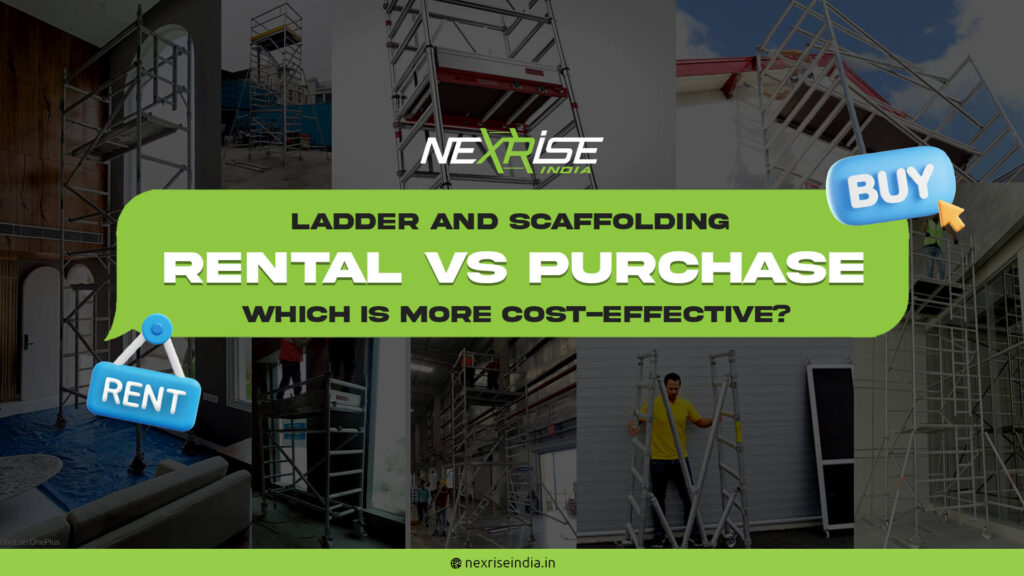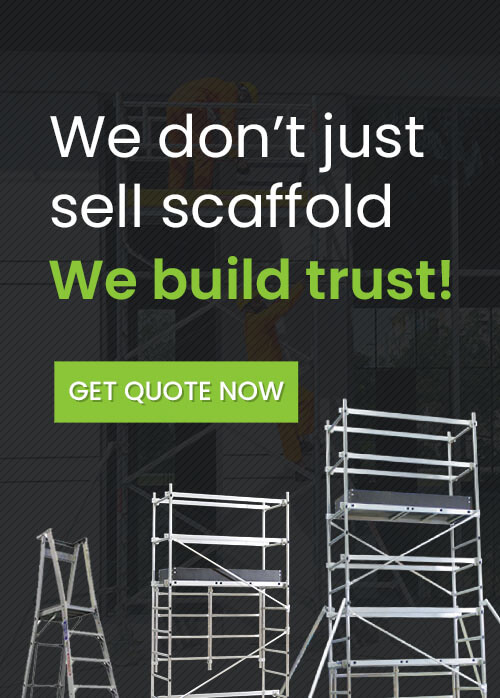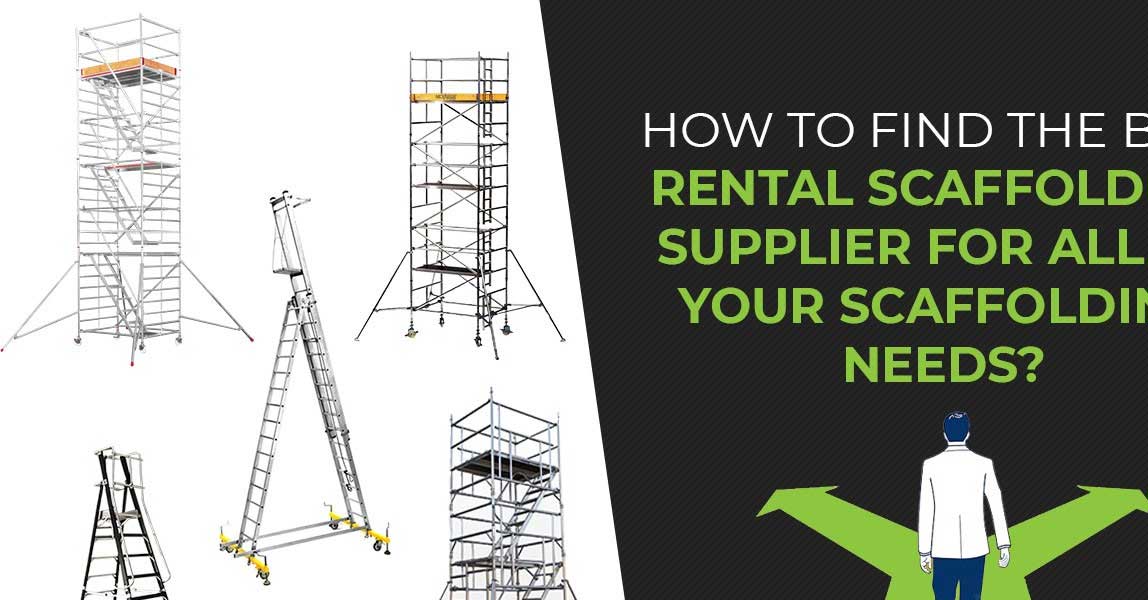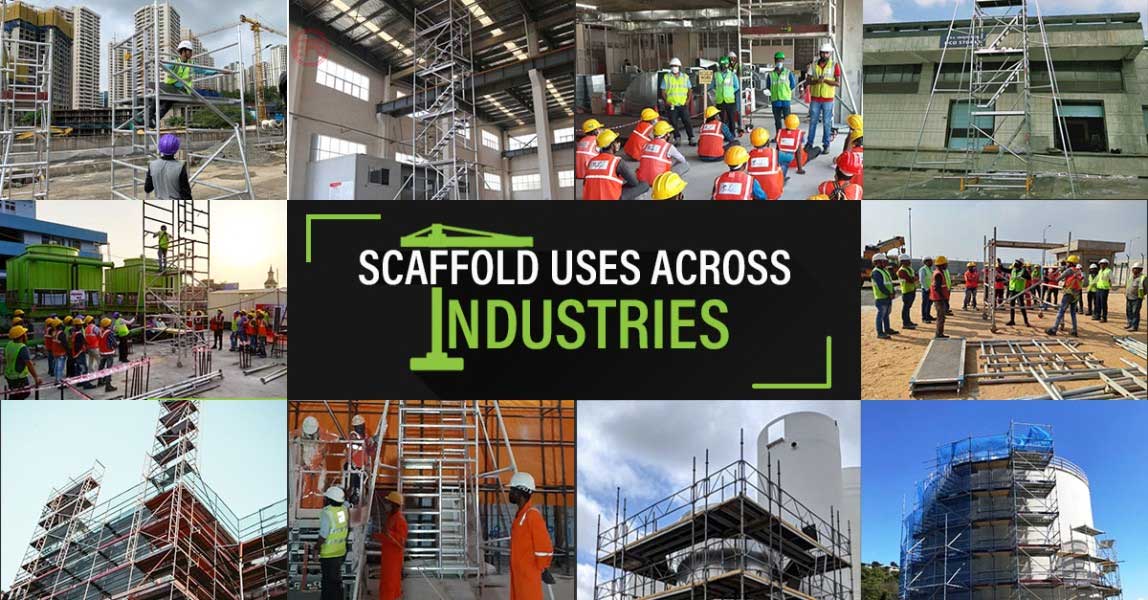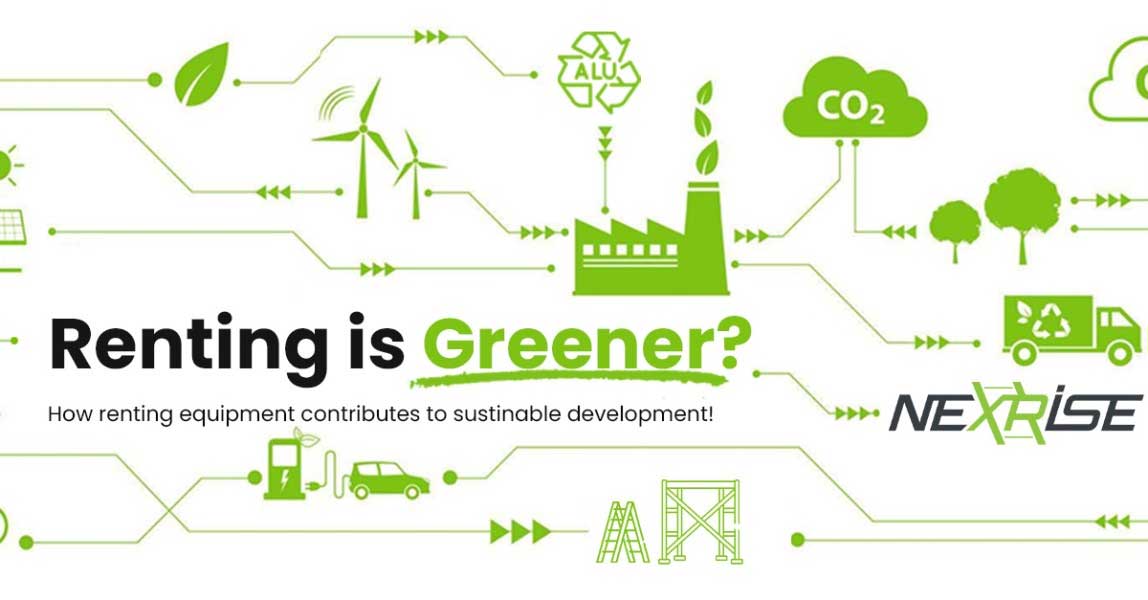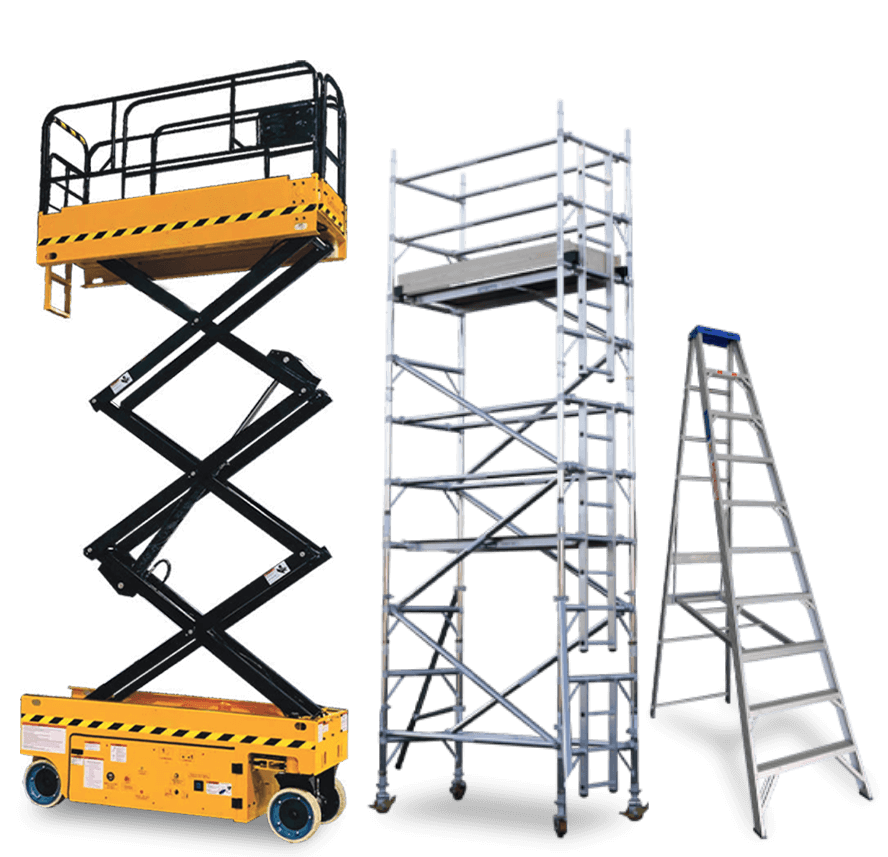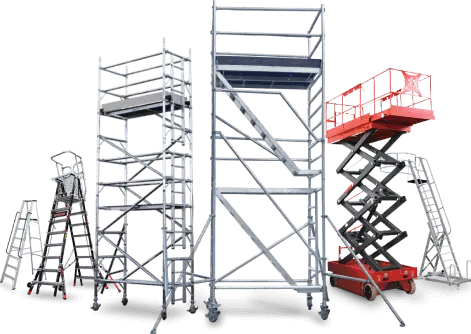When planning projects requiring access solutions like ladders or scaffolding, a common question arises: should you rent or buy the equipment? Both options have their pros and cons, and the choice depends on factors like budget, project scope, and long-term requirements. This blog will explore these factors, helping you to identify ladder and scaffolding Rental vs. Purchase, which is more cost effective?
Key Factors to Consider When Deciding
The length of time you need ladders or scaffolding is a critical factor. If your project is short-term or occasional, renting is often the more economical choice. Renting eliminates the need for a significant upfront investment and ensures you only pay for the period of use. However, for projects or businesses requiring frequent use over extended periods, purchasing may be more beneficial. Ownership ensures uninterrupted access and long-term cost savings.
For example, a one-time house painting job might justify renting, while a construction firm working on year-round projects will benefit from buying.
Duration of Use
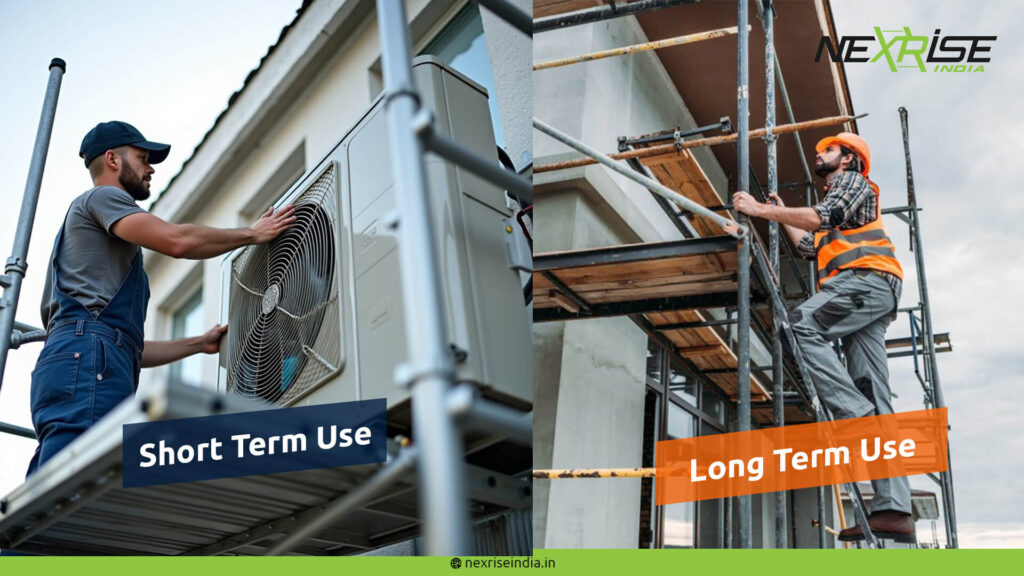
The length of time you need ladders or scaffolding is a critical factor. If your project is short-term or occasional, renting is often the more economical choice. Renting eliminates the need for a significant upfront investment and ensures you only pay for the period of use. However, for projects or businesses requiring frequent use over extended periods, purchasing may be more beneficial. Ownership ensures uninterrupted access and long-term cost savings.
Key points
Frequency of Use
- Renting suits short-term or occasional use.
- Buying is better for frequent or long-term needs.
- Example: A one-time painting job vs. year-round construction projects.
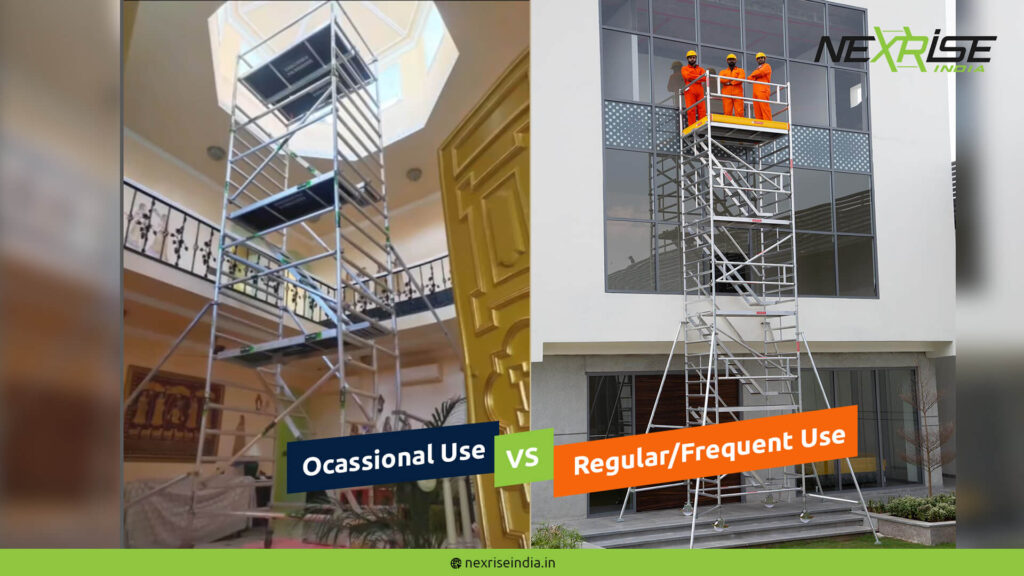
Businesses with regular use of ladders and scaffolding may find purchasing a better investment. For instance, contractors handling multiple construction sites often need such equipment daily. On the other hand, businesses with infrequent requirements, like event organizers or occasional maintenance teams, may benefit from the flexibility of renting. Occasional users avoid tying up capital in equipment they seldom use.
Key points
- Daily users benefit from owning.
- Occasional users save with rentals.
- Example: Construction firms vs. event organizers
Upfront Costs
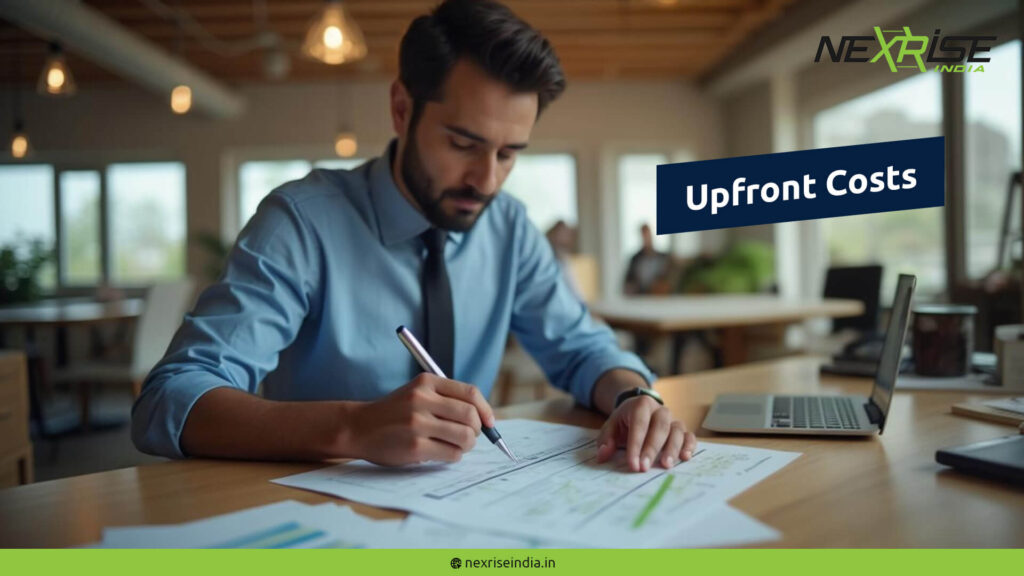
Purchasing ladders or scaffolding involves a substantial initial expense. For startups or businesses with limited capital, this can strain budgets. Renting, on the other hand, requires a lower initial investment, making it a feasible option for those managing tight budgets or testing equipment before committing to a purchase.
Key points
- Buying involves high initial costs.
- Renting requires a lower upfront investment.
- Example: A fiberglass ladder costs thousands vs. rental for a fraction.
Maintenance Costs
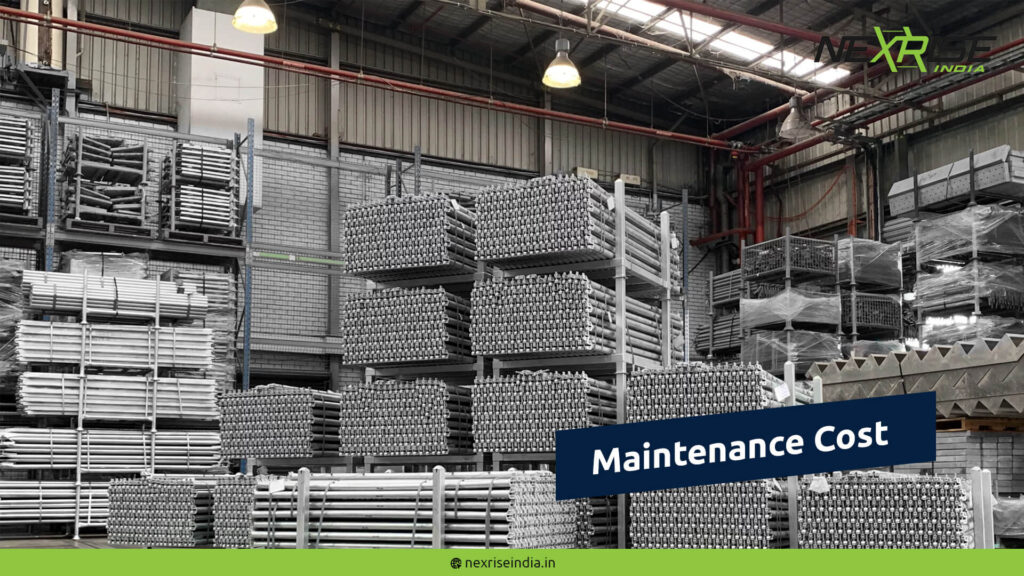
Owning equipment comes with the responsibility of regular maintenance to ensure safety and durability. These costs can add up over time, especially for scaffolding, which may need professional inspections and repairs. Renting shifts this responsibility to the rental company, reducing long-term expenses.
Key points
- Maintenance adds long-term ownership costs.
- Rentals include regular inspections by the provider.
- Example: Rental services ensure safety standards.
Flexibility
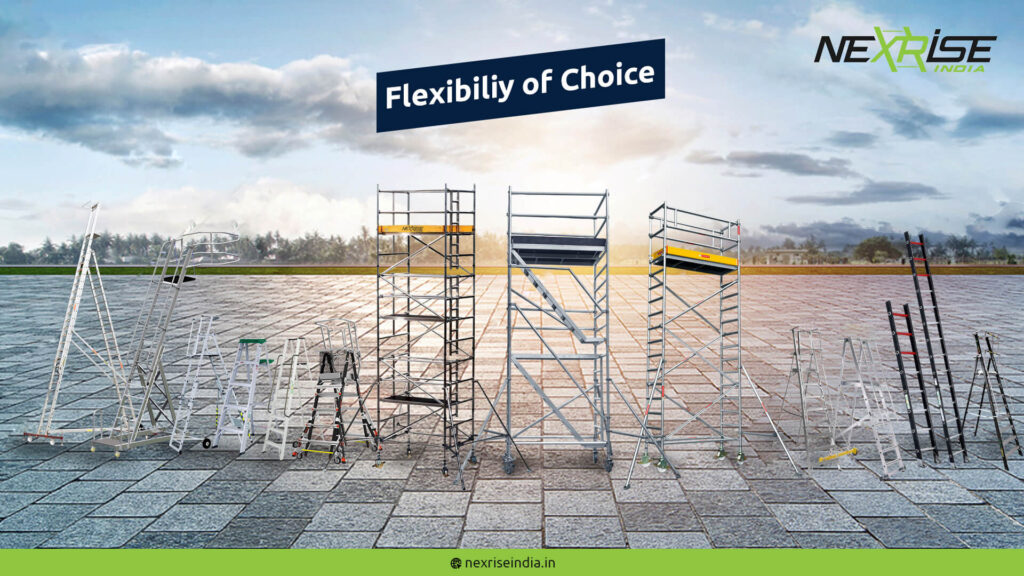
Renting allows access to a wide range of equipment suited to specific project requirements. Need a telescopic ladder today and scaffolding tomorrow? Rental services enable you to switch equipment as needed without additional purchases.
Key points
- Access to varied equipment for different needs.
- Ideal for businesses with changing requirements.
- Example: Telescopic ladders for one project, scaffolding for another.
Storage and Transport
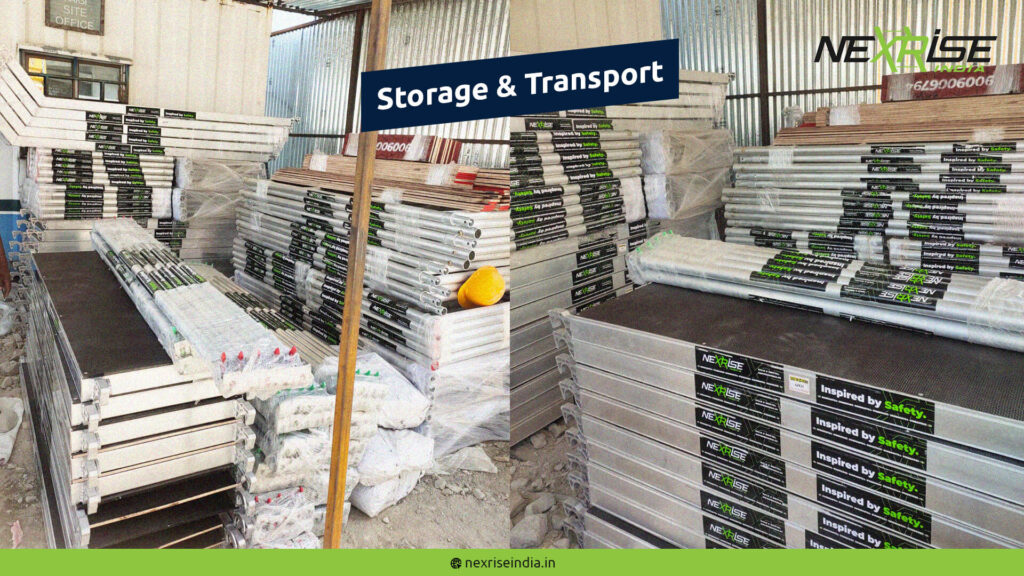
Owning large equipment like scaffolding requires dedicated storage space and transport arrangements. Rental services eliminate this hassle, as they often include delivery and pickup.
key points
- Rentals eliminate storage and logistics worries.
- Transport is included in most rental agreements.
- Example: Small businesses avoid warehouse needs.
Reduced Liability
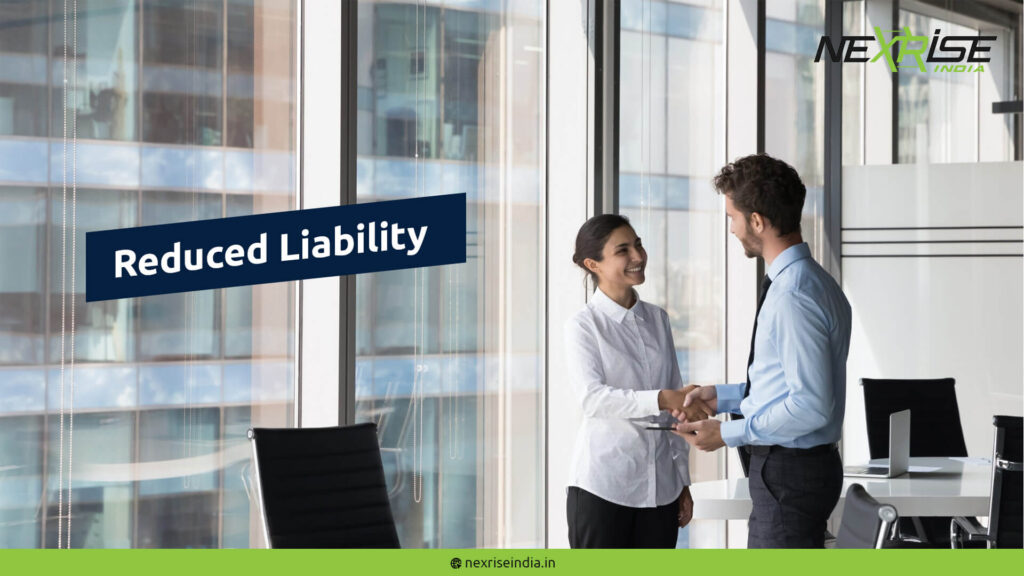
Nexrise India handles maintenance, inspections, and certifications when you rent equipment. This reduces liability, ensuring you always use safe, well-maintained equipment.
Key points
- Maintenance is managed by us.
- Reduces liability for safety issues.
- Example: Construction projects comply with safety standards.
Access to Advanced Equipment
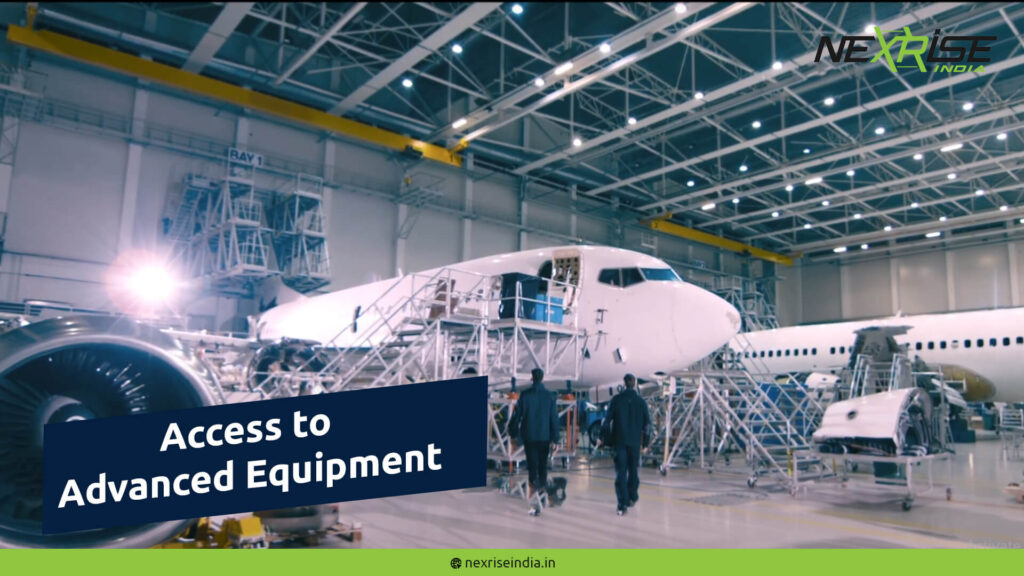
Nexrise India frequently updates their inventory, allowing you to access the latest models without purchasing new equipment.
Key points
- Stay updated with advanced tools.
- Avoid overspending on seldom-used specialized tools.
- Example: High-end scaffolding for a specific project.
Long-Term Availability
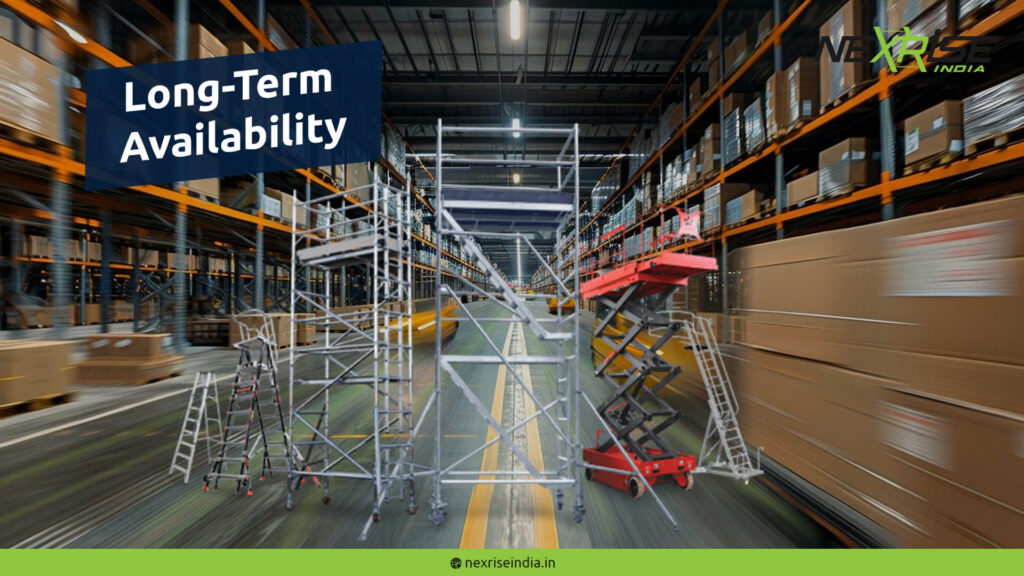
Owning equipment ensures it’s always available when needed, avoiding delays caused by rental shortages or delivery schedules. This reliability is especially valuable for businesses with time-sensitive projects.
Key point
- Equipment is always on-hand.
- Avoid delays during peak rental periods.
- Example: Contractors avoid rental shortages during busy seasons.
Customization
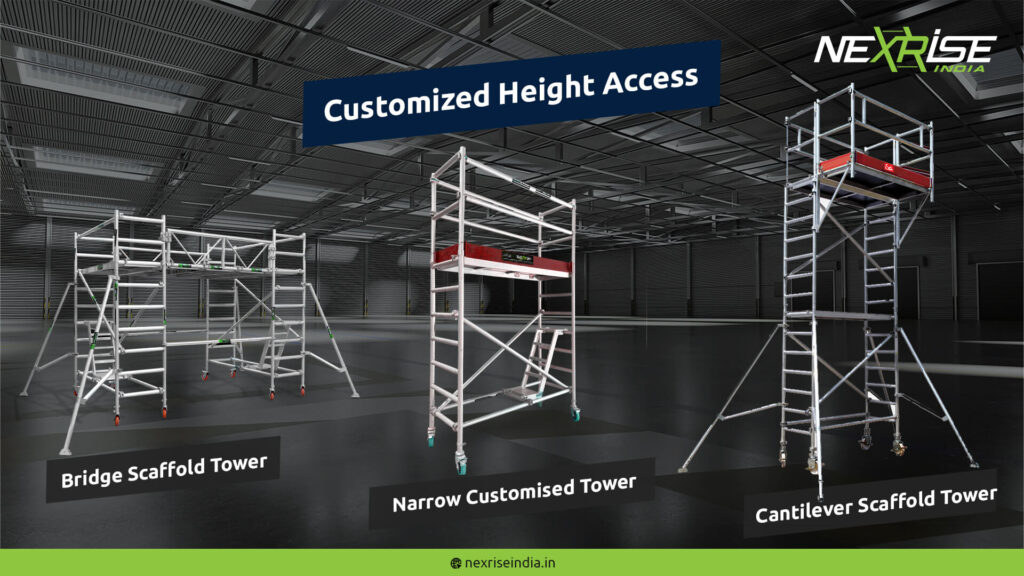
When you own your equipment, you can modify or tailor it to meet specific project requirements. Customization options might not be available with rented equipment.
Key points
- Modify equipment for unique needs.
- Enhance productivity with tailored solutions.
- Example: Adjustable scaffolding heights for site conditions.
Asset Value
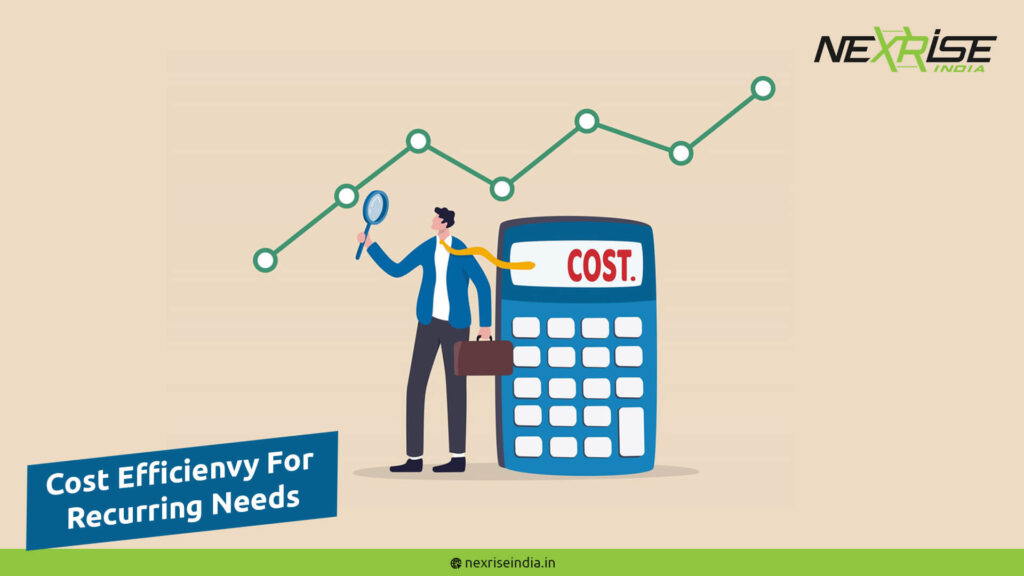
Equipment ownership adds value to your business. Ladders and scaffolding are tangible assets that can be listed in your company’s balance sheet.
Key points
- Adds to business assets.
- Option to resell and recoup investment.
- Example: Upgrading equipment while retaining value.
Cost Efficiency for Recurring Needs
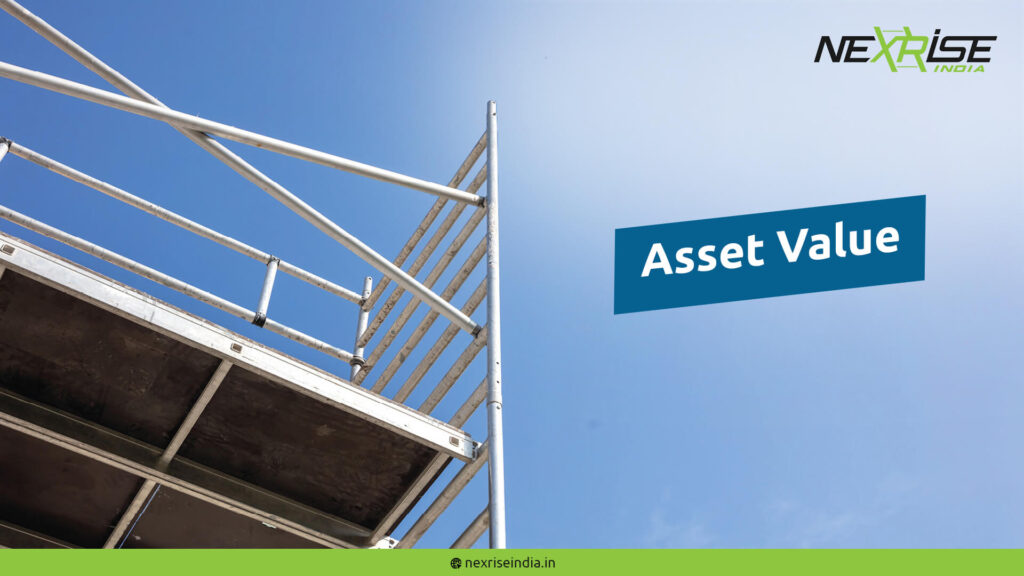
For businesses with ongoing needs, ownership eliminates repeated rental fees. Over time, the cumulative savings can be significant.
Key Points
- Reduces repeated rental costs.
- Long-term cost savings for frequent use.
- Example: Scaffolding used multiple times annually.
Conclusion: How to Make the Right Choice
To determine whether Ladder and Scaffolding Rental vs. Purchase, which is more cost-effective, evaluate these key factors:
- Project Duration and Frequency of Use
If your needs are short-term or occasional, renting is ideal. For frequent or long-term needs, purchasing is likely more economical. - Budget Constraints
Renting requires lower upfront costs, while purchasing involves a significant initial investment. Assess your financial situation and allocate funds accordingly. - Logistical Considerations
Consider storage, maintenance, and transport requirements. Renting eliminates these challenges, while owning provides reliability and control.
The choice between Ladder and Scaffolding Rental vs. Purchase depends on your project duration, frequency of use, and budget. Evaluate your needs to make a cost-effective decision.
Ultimately, the right choice depends on your business’s unique needs and priorities. If you’re unsure, starting with rentals allows you to assess your requirements before committing to a purchase. By weighing these considerations carefully, you can make a decision that maximizes value and minimizes costs for your business.

